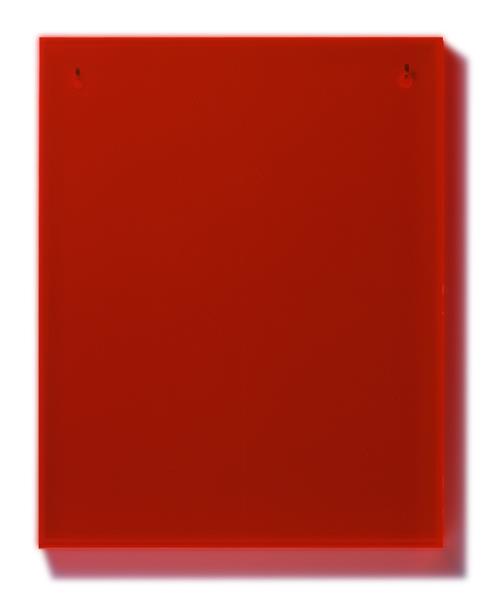Billiard Balls
Nicolás Lamas
set of 16 billiard balls, customized by the artist, phenolic resin
25 × 25 cm (box)
2014
Acquisition 2014
Inv. No. 0281a-p
In reality billiard balls are polished to a high shine, finely smoothed, with the same circumference and weight. Seven of the sixteen balls are solid-colored, seven only partially, one of the playing balls is white, one is black. All, except the playing balls, are numbered. In the version by Peruvian artist Nicolás Lamas, the balls are deformed into clumps. He sands the surfaces so that they appear to be weird “rock forms” that look like fragments from a plastic garbage-dump. They are sharp-edged, unformed, raw. He has been interested in geometry his whole life, Lamas admits, on natural surveying and the instruments that are capable of performing such tasks. Geometry is a type of alphabet, an order, a method to shape absolutes. This also applies to aesthetics. Nevertheless, the geometric has become a doctrine everywhere in aesthetics. Lamas, who lives in Brussels, resists his own tendency for norms. He investigates spatial relationships, tensions, emptiness. What does a fish know about the water in which he swims all his life? was the name of the exhibition where he distributed the billiard balls in the gallery space. Each one had been, however, worked over with a sandblaster. Out of the perfect spherical form emerged an angular lump. The individuality of the objects increased through devaluation of their function. Other colors emerge from inside – one can only conjecture over the polished elegance of the original shape. And the relationship between the balls – their coloration gives them order for a player – is mostly lost. Lamas stresses that the exposed interior reminds him of stones, rocks or minerals that, when polished, reveal a multitude of sediment and layers. “When I was working on this project, I also thought of the movement of the balls during the game, in an implicit geometry of each stroke, and the need to develop a strategy that predicts the ball trajectory in space. From this idea, I wanted to offer a distorted constellation of balls in the three-dimensional space of the gallery, its shapes indicating the impossibility of predicting any type of linear motion.”
Thomas D. Trummer, 2015 (translation: Virginia Dellenbaugh)
Continue readingExhibitions
Small Medium Large. Sculptures and Objects from the evn collection, evn sammlung, Maria Enzersdorf, 2022
Publications
evn collection. 95–2015 Jubilee, Vienna 2015, p. 233–235

